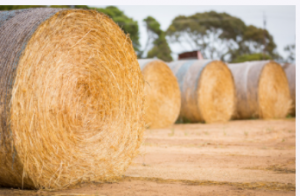Baling twine is a small diameter twine used to bind fibrous material. It is made from sisal and has a tensile strength of 95 psi to 325 psi. This type of twine is used to tie ropes, sacks, and woven fabrics. However, it is also available in synthetic varieties. There are several types of baling string and twine.
A single strand of baling is used to wrap a bale. It is then tied off tightly to keep animals from escaping. These bales are very strong, allowing them to carry large animals. They are also easy to handle and are perfect for farmers looking to subsidize their operations. In addition, the increased density of strands makes them more suitable for moulding. The result is a higher yield and improved aesthetics.
 Biodegradable: Unlike plastic and tin foil, baling twine does not degrade or harm the environment. Due to their biodegradable nature, they won’t add to landfill waste. It means that they are a good choice for livestock farmers. These products are made from fibrous, natural material and are less likely to break or get damaged than plastic or cotton. In addition, they will last longer and can be used for more than one purpose.
Biodegradable: Unlike plastic and tin foil, baling twine does not degrade or harm the environment. Due to their biodegradable nature, they won’t add to landfill waste. It means that they are a good choice for livestock farmers. These products are made from fibrous, natural material and are less likely to break or get damaged than plastic or cotton. In addition, they will last longer and can be used for more than one purpose.
Durable and biodegradable: Compared to standard twine, baling requires little maintenance. It does not need to be trimmed and is more durable. Unlike standard twine, baling does not require extra care. The bales will be left in the field and not tangled in the refuse twine or wagon wheels. And since they are biodegradable, they do not harm the environment.
Optimal For Baling: There are several types of twine available for balers. Some come braided and have a wide range of colours. Others are cross-strand and have no braid. In addition to the two types of balers, the other kind is woven and has no knots. Aside from hay, these twines are great for recycling and other waste materials. For instance, black label twine is made from recycled post-industrial materials and is strong and durable.
There are two types of baling twine. Both types have advantages and disadvantages. For example, black baling twine is more durable and lasts longer, whereas black baler twigs are more likely to break easily. Likewise, solar-degradable twine is a good choice for the environment as it can be recycled multiple times. In addition, it is recyclable, which is a great benefit for the environment.
Baling twine is a durable option for baling hay. It is reusable, is environmentally friendly, and has many uses. If you plan to store the hay outside, ensure the twine is UV stabilized. If you don’t, you might end up paying for new twigs. In addition to that, you should use sisal twine, which is made of natural fibre. If you’d like to avoid this, you can also use sisal twine.
While sisal twine is more durable, plastic twine is less resilient. This type of twine is not biodegradable and can become littered in feedlots for years. Polypropylene was the first manufactured twine to be developed, and it was also more suitable for larger bales of hay. It is made of smaller fibres and has a high baler density.
Baling twine is made from raffia or sisal fibre. It is a natural fibre and is very strong. This type of twine can be damaged in a baling machine, but it will not splinter or break. Nevertheless, it is still a viable option. The twine above is made from natural fibre, and it is biodegradable. For this reason, it is recommended to use sisal twine.
Besides being a versatile material, baling twine has many other uses. It is useful in securing tarps, securing things, and securing objects. It is even used as a temporary fix for broken shoelaces. It is also used in poultry feeders. So, aside from being a good choice for securing a tarp, baling twine is also a good choice for other purposes.